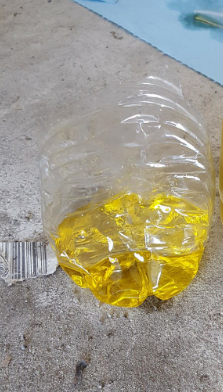
Originally Posted by
alnoor15

Currently driving a 2015 audi a4 with 42k miles and this saturday I am planning to install akebono ceramic brake pads, cross drilled and slotted rotors and SS stop tech brake lines on all wheels. I have been told that I need to have a brake flush and bleed my brakes.
First of all, what exactly is a brake flush and bleeding brakes? Do I need to do one or the other or both? What are the differences and benefits of each one and how much would it cost in labor?
Brake fluid absorbs moisture and should be completely flushed at least every 2 years.....a brake flush is replacing all of the brake fluid in your calipers, lines, reservoir, clutch line (if manual). Brake bleeding is part of brake flushing and the same process. You are bleeding AIR from the brake fluid. You do need to bleed while flushing.
I don't know how much shops charge. If you have any mechanical ability, you can do this. Put the car on jackstands or a lift. Remove all wheels. Get yourself a MOTIV brake bleeder. Fill with all new fluid (back a couple years ago, you could buy ATE Blue so you could see when the fluid changed). Go to the passenger rear and drain into something until the new fluid completely replaces old fluid. Then go to driver's rear. Then passenger front. Lastly, driver's front. There are multiple YOUTUBE channels that show this as well. Bottom line, you don't need to bleed the brakes when changing brake pads or rotors. You may need to top off the reservoir though. You do need to BLEED if you've remove the calipers, opened the caliper bleed screws, or are in the process of flushing. Since you are replacing the brake lines, YOU WILL NEED TO BLEED AND MIGHT AS WELL FLUSH the system.













 Reply With Quote
Reply With Quote

 . I believe a much longer period than 2 years is fine though. I did mine 4 years ago and a recent copper test is still negative and the fluid is still clear and clean. I 'm not concerned about moisture.
. I believe a much longer period than 2 years is fine though. I did mine 4 years ago and a recent copper test is still negative and the fluid is still clear and clean. I 'm not concerned about moisture.





Bookmarks